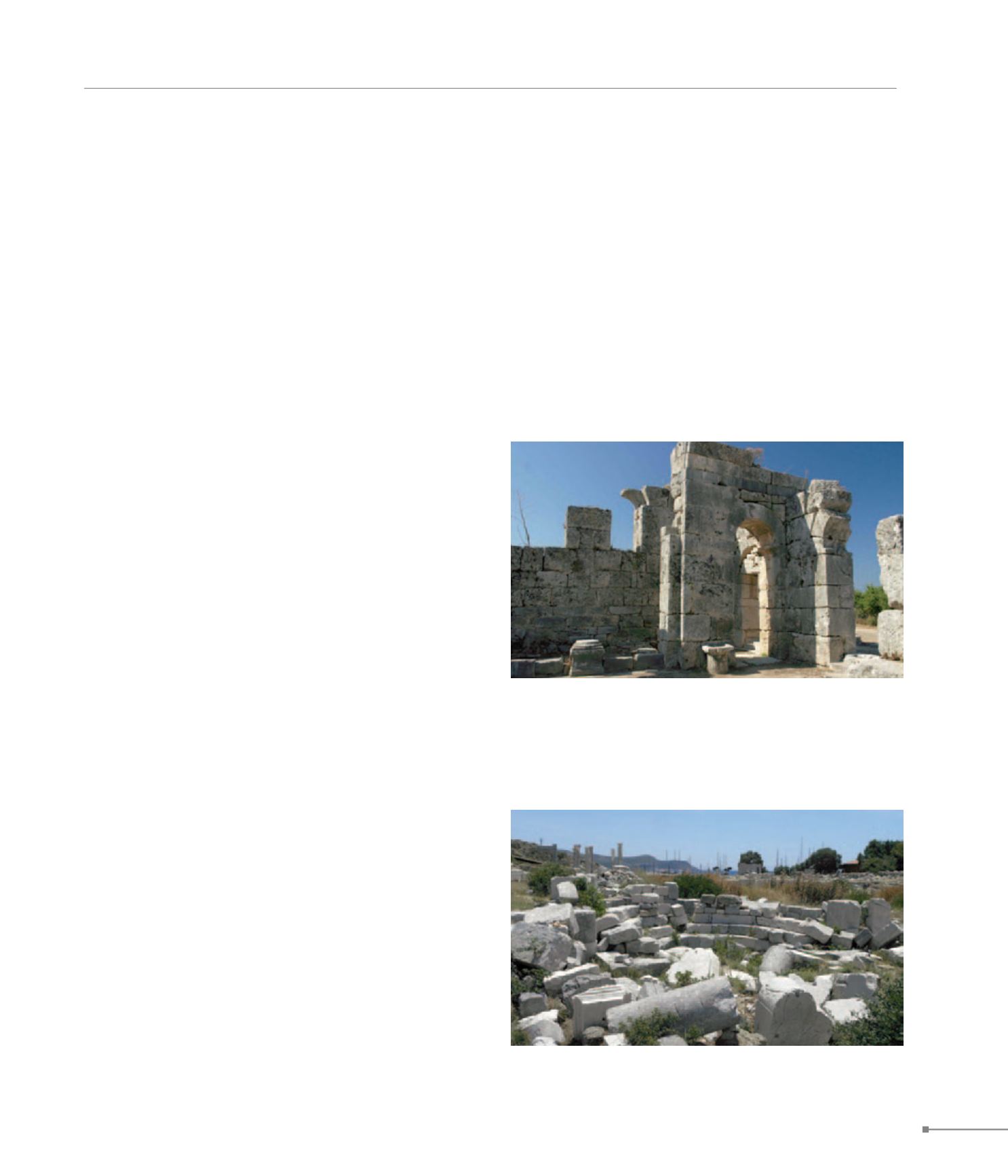
Fethiye. Telmessos, Anastasiopolis, Makri.
Knidos.
COASTLINE OF ASIA MINOR AND EASTERN THRACE
297
531. Kaunos, church in the center of the city (Καύνος, ο ναός στο
κέντρο της πόλης)
535. Knidos, basilica of the Agora (Κνίδος, βασιλική της Αγοράς)
530.
Fethiye. Telmessos, Anastasiopolis, Makri.
The citadel features medieval walls, possibly of the 12th c.,
with later repairs. The surrounding islands have numerous
medieval ruins.
531.
Kaunos, Hegia, near Delyan
.
The remains of numerous single-nave and three-aisled Early
Christian basilicas have been found. The church standing in
the centre of the city, between the theatre and the thermae,
is a relatively short and wide structure with a polygonal apse
in the E. Judging by the massive piers, the centre of the nave
was covered by a dome, i.e. it was a domed basilica. The
aisles were barrel-vaulted. Architectural sculptures survive, in-
cluding capitals from a local workshop and parts of an ambo.
Mosaic floors have been found in an annex E of the basilica.
The church can be dated to the late 6th c. or the early 7th c.
The remaining Early Christian elements in the city, like walls
and cisterns, have not been investigated.
533.
Serce Liman.
A shipwreck has been found with fragments of glass vessels
that were intended for recycling, many other vessels in good
condition originating from the Fatimids of Egypt, and numer-
ous Byzantine amphorae of the 9th-11th c. Many of the finds
are exhibited in Bodrum museum. The ship came from Syria
and sank in 1020-30.
532.
Gerbekilise, Tracheia (?).
In a cove is a Byzantine settlement (perhaps associated with
the bishopric of Tracheia), where remains of four churches
survive. One of them is a small, possibly Early Christian ba-
silica with piers. Another is a Mid-Byzantine cross-in-square
church with dome.
Caria
534.
Bozburum.
A plethora of 9th-10th c. amphorae from the Crimea has been
discovered in a shipwreck.
535.
Knidos.
The city, already renowned from the archaic period, was origi-
nally located S of the Knidos promontory, near present-day
Dat
ç
a, but in the early 4th c. was moved to a more favour-
able location on the peak of the promontory. To date, four
three-aisled basilicas and three single-nave ones have been
detected. Some of them had been built above ancient monu-
ments with ancient material. Mosaic floors and panels from
local workshops have also been found. The basilicas are gen-
erally dateable to the 5th-6th c.


